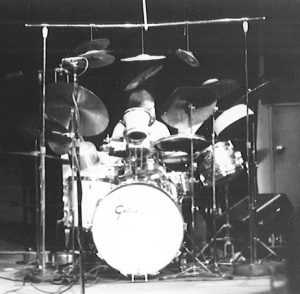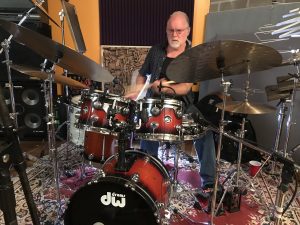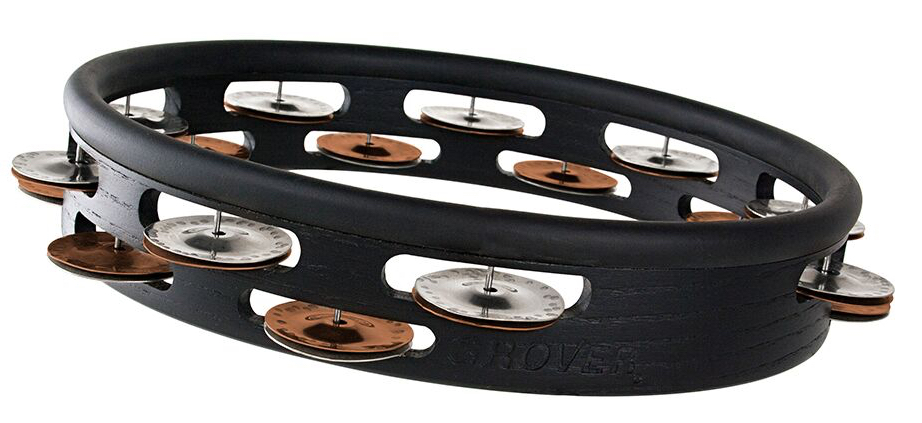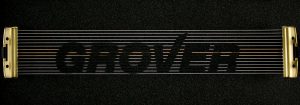BY PHIL HOOD
 You apply to play at the world’s largest gathering of drummers and you get accepted. Now what?
You apply to play at the world’s largest gathering of drummers and you get accepted. Now what?
I thought I’d ask some of the artists who are playing or teaching at PASIC 2018 what and how they plan for that. First I emailed Glen Sobel, the Alice Cooper drummer and Drum! columnist who has played with a who’s who of metal, hard rock, and guitar pyrotechnicians. Glen was quick to the point, as direct as one of his dead-on backbeats. “I’ll be talking about what it means to be a drummer’s drummer in a work environment where collaboration, restraint, and discretion are necessary. Maybe in some ways it’s an anti-clinic. But of course there will be talk of influences and [skills like] reading, subbing.” Sounds great.
Next I called Paul Wertico, who came to fame during 18 groundbreaking years with Pat Metheny, and is a celebrated author and teacher who has worked with numerous artists, to get his take on how to approach a PASIC clinic. Our discussion quickly escalated to a long conversation about approaching performance, teaching unusual approaches to the kit, drumming and life. Ready, set, go. Nine questions with Paul Wertico.
DRUM!: Is a PASIC clinic different from other events?
Paul Wertico: Obviously, it’s a huge event with people from all different fields. PASIC is universal–world, rock, jazz, marching, classical, and therefore people from all these musical interests. So, when I perform at a clinic—any clinic—I like to look at who is out there. Whether it’s a high school, a university, or a store or festival, there are all kinds of different people who come to hear you and I want to present ideas at a level that they can all get something out of it.
So you prepare the same way for this as any other show?
No, each clinic situation is unique. You can plan heavily or just go up and be an artist and enjoy the freedom. For this one, I’m ready, even doing a PowerPoint. Yet, one time a few years ago, I went to the Chicago Drum Show just to attend and see some clinics, and (organizer) Rob Cook said, “There’s a clinic in one hour and Lennie DiMuzio is sick, so can you do it?” So, I borrowed some sticks, drums, cymbals, and random percussion instruments and did a clinic. One year at PASIC I subbed in the big room for (jazz legend) Billy Higgins. He was sick, too.

Paul Wertico
Is the audience there for learning, for chops, for inspiration, or all of
It depends. If the audience is filled with hobbyist drummers, they may not care about playing in 22/8 but you still want to give them enough information they can use. I think just as drummers should always serve the music, I feel clinicians should serve their audience.
How many times have you performed at PASIC?
I’ve done four or five performances at PASIC, all in the “big room.” They have these different sized rooms. The big one is huge–this time. I’m going to be in the second room, which might be good. People are coming to learn. The big room is sometimes more of a showcase for showing the chops you have. I’m not putting thatdown. Years ago, I was there as the “famous drummer” with Pat Metheny Group. There’s a sort of pressure when you’re young and a lot of people are watching for you to show everything you’ve got. At age 65 it’s different. Now I’m happy with what I’ve done–and what I do–so I’m not overly concerned about what people think [laughs]
So how do you see yourself as a musician now?

Wertico in early days with hubcap cymbals.
You wrote a book last year, Turn The Beat Around. Will that material find its way into PASIC?
Absolutely. It’s all about playing on the 1 and 3 instead of the 2 and 4. It’s another way of looking at how to play drums and it really works as exercises. Alfred came to me about writing a book and I immediately thought about doing a book about what I’ve since termed: frontbeats. Alfred was great and let me do basically whatever I wanted. At one point we encountered a problem because I was using Finale software for the notation and I was placing the stems of the bass and snare differently than Alfred does them. And, there’s over 1,000 exercises. I thought, “Do I really have to do this again?” Fortunately, they have a great [music copyist] who did all of that for me.

“Turn The Beat Around” by Paul Wertico
How do those exercises go over with students?
After playing 1 and 3 on the snare drum and going through all these exercises, my students would then go back to playing 2 and 4 and sound much better. The 1 and the 3, those are the strong beats in classical music. They have to be strong for the weak beats to work. There’s this balance, the 1 to the 2, to the 3, to the 4 [starts rhythmically singing the beats].
Honestly, after playing these exercises somestudents were playing things I could barely play. They’re also not pushing the downbeats as much. Some people really push the downbeats and they’ll even sometimes drop a 128-note beat or more. These exercises make them play the whole beat and it gives the groove a much wider feel.
Did you study that intensely when you were young?
You know, I have hundreds of books but usually I’d never play anentire book. I was not one to go through every exercise in Stick Control endlessly. When I was younger I’d get the general idea of abook and then work on that. It’s the same way with rehearsals. Now I’m usually too busy to rehearse because of teaching and other gigs so I usually get the tunes and go through them once. I’ve been playing recently with a Brazilian singer Cecy Santana, which is great. But I don’t need as many rehearsals. When you get more experienced you can roll with the punches, you memorize the music and then when it’s time to play, you play.
What’s the biggest thing you try to impart through teaching?
When I teach, I see my students grow by getting out of them what they are, and who they are. I want students to get in touch with themselves. Why are we doing this, playing drums? It’s not just to impress the audience. It’s really to inspire them. When you’re on the bandstand don’t be afraid of who you’re playing with or what you’re playing. Listen, and react. Don’t come in with an agenda. You learn the forms, the kicks, the styles, the groove. But when you play, you play.
Listening Lessons: Playing 1 And 3
Wertico says, “There’s not many songs where the drummer emphasizes or feels the 1 and 3, but there are some. It’s really worth looking up ‘Forgotten Road’ with Dennis Elliott. He was a great drummer.”
Here are a few songs that emphasize the 1 and the 3:
- “Woman Don’t Want To Love Me” (Chicago), Danny Seraphine, drums
- “Bell Bottom Blues” (Derek and the Dominoes), Jim Gordon, drums
- “Sunshine Of Your Love” (Cream), Ginger Baker, drums
- “Forgotten Road” (If), Dennis Elliott, drums
I’M GIVING AWAY THIS GROVER PRO TAMBOURINE!

Comment below to win this Grover Studio Pro Tambourine.

Grover Club Combo snare wires
We like to give away cool gear, and this is definitely cool. Grover Pro originally made only concert tambourines. But once country and pop artists started tearing the head off and using them for recording, they knew what they had to do. Their Studio Pro model features the same construction as their professional concert tambourines with German silver and phosphor bronze jingles, and a rubber edge to protect hands or shells.
To Enter: Just sign up for our newsletter or leave a comment below. Or drop me a note about who you’d like to see interviewed for Behind The Scenes.
